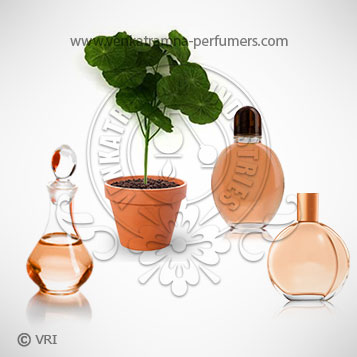
| Botanical Name | Pelargonium graveolens |
| Common Name | Geranium Egyptian |
| Country of Origin | Egypt |
| Solubility | Soluble in alcohol, insoluble in water |
| Specific Gravity | 0.87700 - 0.89900 @ 25.00 °C |
| Optical Rotation | (-8.00) - (-14.00) |
| Refrective Index | 1.46200 - 1.46980 @ 20.00 °C. |
| PlantPart | Leaves |
| Bland With | It mixes well with Angelica, Basil, Bergamot, Carrot seed, Cedarwood, Citronella, Clary Sage, Grapefruit, Jasmine, Lavender, Lime, Neroli, Orange and Rosemary. |
| CAS No | 8000-46-2 |
| Flash Point | 185.00 °F |
| Extraction Method | Steam Distillation |
Geranium Egyptian plant is a hairy perennial shrub, with pointed leaves, serrated at the edges and pinkish-white flowers. It is often used in hedgerows and can grow up to about one meter high (3 feet).
There are about 700 species of Geraniums, many of which have become very popular as decorative, scented house and garden plants. Only about 10 of all those varieties are used for essential oil production. In Africa, Geraniums are often planted around the house for protection, particularly against snakes. According to legend, the prophet Muhammad imbued the Geranium with its lovely scent, when one day he passed by a humble weed on his way down from the mountain. He took a moment to rest and hung his sweaty shirt on the herb. The Geranium held it up to the sun until it was dry, which pleased the prophet so much that he covered it in beautifully scented flowers. Geranium oil has become one of the most widely used oils in Aromatherapy; its overall effect is described as 'balancing'.
Color : Greenish yellow viscous liquid with sweet and herbaceous scent,
Aroma : soothing woody scent.
Citronellol, geraniol, 10-epi-g-eudesmol.
It can be used in the treatment of acne, bruises, burns, cuts, dermatitis, eczema, hemorrhoids, lice, mosquito repellant, ringworm, ulcers, breast engorgement, edema, poor circulation, sore throat, tonsillitis, PMS, menopausal problems, stress and neuralgia.